Few of my blogs concern baseball but coincidentally the ones I have written all seem to concern the Chicago Cubs i.e.; “IT MUST BE BASEBALL SEASON; THE CURSE OF BILLY THE GOAT,” "THAT'S NOT A MIDDLE FINGER, HE JUST THINKS KOSUKE IS #1.” and “ONE FLEW OVER WRIGLEY FIELD.”
*
On a beautiful morning in June 1992, my wife Sue and I arrived for a day trip at Baltimore’s Inner Harbor. We rolled down Interstate-95’s off-ramp and saw Oriole Park at Camden Yards. The stadium was two-months old and was the first of the trendy, fan-friendly baseball venues with throwback architecture.
 |
| STILL HIGHLY PRAISED TODAY, ORIOLE PARK AT CAMDEN YARDS BECAME THE BENCHMARK FOR RETRO BALLPARKS BUILT IN THE 1990's AND THE 2000's. |
Sue and I soon found out that the Texas Rangers were in town to play the Orioles that night. I was aware that baseball aficionados from all over the world flocked to Baltimore to check-out the aesthetically pleasing, "Camden Yards." That meant O's games were such a hot commodity that they were regularly selling-out. We allowed ourselves to get caught-up in the hoopla, adjusted our plans and set out for the ticket booth.
Unfortunately, the box office clerk informed us, “We are ALREADY sold-out for the entire season.” WOW! Then he added, “But, at 5:00PM on game day, a limited amount of standing room tickets are available…but you have to come early.”
We went about our sightseeing business with the idea of coming back at 4:30. We went to lunch and while doing some touristy stuff, a man suggested the Babe Ruth Museum, (nearby at 216 Emory Street).
 |
| BALTIMORE'S NATIVE SON, BABE RUTH (1895-1948) HAS A MUSEUM HONORING HIS MEMORY AND ACCOMPLISHMENTS. THIS EXHIBIT IS IN THE NARROW, THREE-STORY HOUSE (above) THAT HE WAS BORN IN. |
Incorrigible George Herman Ruth, the great, "Bambino,” didn't live at home long. At age seven, he was sent, (until he approached adulthood), to a reformatory/orphanage, the St. Mary’s Industrial School for Boys.
Sue and I paid four dollars each and entered the tourist trap museum. My first clue that this would be cheesy was found below the big letters of BABE RUTH MUSEUM, (smaller print mentioning the premises was also home to the Baltimore Oriole Hall-of-Fame).
Inside, most of the house was gutted to handle large amounts of visitors. About a quarter of the limited space was dedicated to the Baltimore Orioles. The rest of this Babe Ruth attraction included less-than-thrilling rooms that had been restored to resemble everyday turn-of-the-century life, (I yawned through a glimpse of the Ruth's bedroom, parlor and kitchen).
Next up was an unimpressive spattering of actual Ruthian memorabilia, (his catcher’s mitt from St. Mary’s and original birth certificate were the big highlights). Further along, even the tiny gift shop was surprisingly more focused on Orioles merchandise, (it seems impossible but the store was so irrelevant that in seconds, I knew I wasn’t buying anything! I wasn’t even tempted by the Gus Triandos bobble-head).
 |
| GUS TRIANDOS (1930-2013) WAS A POPULAR ORIOLE. IN HIS EIGHT YEARS IN BALTIMORE, HE WAS A FOUR-TIME ALL-STAR. |
The final dagger in my disappointed heart was a small theater. The rear wall featured a hum-drum mural that listed the details of each of the “Sultan of Swat’s,” 714 homeruns, (please note, the 40th anniversary of Hank Aaron breaking that record is tomorrow, April 8th).
In the theater, the 1963 Babe Ruth episode of the TV show, *“BIOGRAPHY,” was shown (in fabulous black and white), on a continual loop, (if we didn’t watch some of it, we could have seen the whole shebang and been outside in twenty minutes).
*The original "Biography" was hosted and narrated by Mike Wallace. Fron 1961-1964, this CBS program, (designed for adult viewers), aired fifty-nine elegant episodes that encapsulated the lives of history's most famous individuals.
One part of that “Biography” episode I had always remembered was the assertion that during the 1932 World Series against the Chicago Cubs, Ruth pointed at centerfield before clouting a tremendous homerun to that exact spot.
On my way out, I was thinking about the Babe’s called shot as a perky hostess asked, “What did you think of our Babe Ruth Museum?” The best part was recalling the supposed called shot. But I already knew that before I went in so I said, “I THINK, I want my four dollars back.” She figured I was kidding and said, “You should be more positive…” I said, “You’re right, I apologize. I’m positive...I want my four dollars back.” Then I interrupted her rebuttal, used my thumb to point at Sue and added, “And I want her four dollars back too!”
At 4:30, the baseball portion of our day took another negative hit back at Camden Yards. Along one side of the ticket booth was a long line of people.The other side was empty. On the empty side, we told the clerk what we wanted. He pointed to the mass of people and said, “See that thick orange stripe painted on the pavement near the end of the line?" I shrugged, "Yeah." He said, "Sorry, but the black lettering on it tells walk-ups, like you, that standing room beyond that spot is sold out.” I guess the first clerk should have been more specific when he said; you have to come early for standing room.
The other day on sports radio, that experience in Baltimore (twenty-two years ago) came to mind when their topic was the upcoming 100th anniversary of Babe Ruth’s first game, (July 11, 1914) . The host was interviewing author Ed Sherman (a veteran baseball sportswriter from Chicago), who was touting his new book, “BABE RUTH’S CALLED SHOT: THE MYTH AND MYSTERY OF BASEBALL’S GREATEST HOMERUN.”
Sherman explained that after the first two games of 1932 World Series, the New York Yankees looked like they were poised to sweep their way to the championship. But back home in the friendly confines of ***Wrigley Field for game three, the Chicago Cubs gained momentum. Babe Ruth (in the twilight of his illustrious superstar career) came to bat against Cubs ace, Charlie Root.
***UNLIKE MODERN CAMDEN YARDS, ANTIQUATED WRIGLEY FIELD TODAY, IS CLEARLY THE OLDEST, MOST RUN-DOWN MAJOR LEAGUE STADIUM. WHILE SOME PURISTS CALL THE PARK "CHARMING," I CAN'T HELP BUT THINK IT ADDS EMBARRASSMENT TO A SAD SACK ORGANIZATION THAT HASN'T WON A CHAMPIONSHIP SINCE 1908 AND HAS ONLY BEEN TO THE WORLD SERIES SEVEN OTHER TIMES SINCE.
The substitute Cubs players tried a verbal barrage to rattle Ruth, (eighty years ago, this level of trash talk was called bench jockeying and was acceptable). Nonetheless, the unflappable Ruth gave it right back to them. By the third pitch of the at bat, in an unprecedented manner, some of the Cubs, unchecked by the umpires, were on the field just outside their dugout, frantically trying to get under Ruth’s skin.
The crazed overflow crowd joined in the taunting. We can’t conceive of such drama today as Ruth then further incensed the Chicagoans by making a series of gestures, (preserved on snippets of moving picture film and still photography). The most romantic interpretation of one of these gestures suggests that Ruth is pointing to centerfield and calling his shot (hitting a homerun). Some people feel he was telling the Cubs to get back in their dugout at one time and insulting their pitcher on another.
The next pitch was a strike. I remember a sound bite from the “BIOGRAPHY” episode where Ruth (in his own voice), describes the needling he was getting from the Cubs as, “Getting the OWN-YAH put on me.”
 |
| IN THIS PICTURE, RUTH IS CLEARLY ADDRESSING THE CUBS THAT ARE STANDING OUTSIDE THE DUGOUT. |
I don’t recall whether the Babe claimed to be calling his shot or not. All I know is, he positively extended his arm and again pointed his finger to centerfield. Bear in mind, some naysayer’s will argue that he was reminding pitcher Charlie Root that he still had one strike left.
Babe Ruth, as great as he was, never really had a singular moment that would define his career. However the situation was about to change because his legend and legacy would be reinforced on the next pitch. There was nothing ordinary about this homerun. It was not a wind blow shot down the line or one that only crept into the first row of the bleachers. This titantic blast to centerfield, (where he was “pointing”), has been estimated at 500 feet, (a ball hit that far is rare today but was unheard of back then).
Of course, there were no multi-angled TV cameras, no slow-motion instant replay or Sports Center. Player interviews by the press after games wasn’t in vogue yet and late night TV appearances wouldn't be invented for decades. So an immediate breakdown of this historic event never happened. However, some of baseball’s greatest writers of all-time were in attendance, like Grantland Rice. But Rice didn’t even address the possibility that Ruth called his shot until days later, (after other writers got so much mileage from it).
If the Babe struck out in that spot perhaps the Cubs would have won that game or a couple of games or even the whole series. Instead, whatever fight the Cubbies had evaporated because the Babe’s homerun, (his last-ever World Series homer) crushed it out. The Yankees won that day and the next game, to complete the four-game sweep.
Author Ed Sherman also provided some back story that helped explain part of the heightened friction between the teams. Apparently, the Cubs shortstop was former Yankee Mark Koenig, (in his six years with New York, he was a key figure during their “Murderers Row” era).
In early August, Koenig was picked up by the Cubs. He played in only thirty-three games but his .353 batting average and veteran leadership directly helped them down their National League pennant winning stretch.
 |
| EVEN THOUGH HIS SMALL-BALL TALENTS WERE DWARFED BY BABE RUTH AND LOU GEHRIG, MARK KOENIG (1904-1993) ENJOYED A SOLID MAJOR LEAGUE CAREER THAT CONTINUED AFTER HIS YANKEE DAYS WERE OVER. |
Due to Koenig's brief time with the team, the Cub players stupidly voted him a half World Series share (bonus money). So the animosity the clubs had for each other related to Koenig’s former Yankee brethren supporting him while also serving as a chance to call their opposition cheapskates.
In the end, I agree with Ed Sherman, it doesn’t matter whether we’ll ever know for certain if Ruth called his shot or not. Either way, it was baseball’s most unique and interesting at bat, with arguably its best player, on its greatest stage, which provided the most exciting result. Sherman's opinion gains credence because eighty-plus years later, we still love debating the issue.
*
While doing research for this article, I saw that the Babe Ruth Museum has updated their presentation. I read only positive reviews and none of them mentioned the Orioles Hall-of-Fame sharing the space. So, I'm glad the O's relocated. Of course I have nothing against Gus Triandos, (I'm sure he was big in Baltimore), but a player of his ilk (whose tiny bio includes the full crcumstance of his one career stolen base), shouldn't be enshrined in the same rareified air as Babe Ruth.

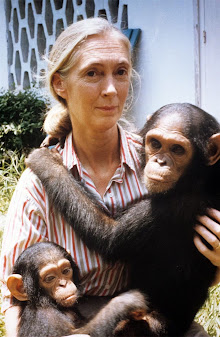
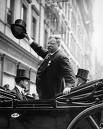





































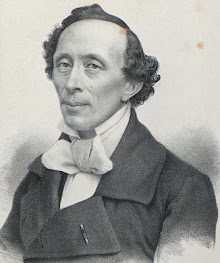


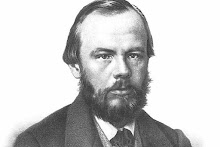



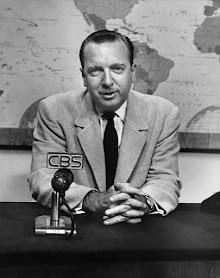












































































































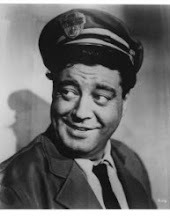
















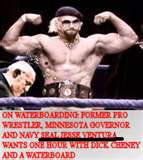




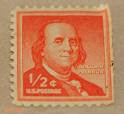



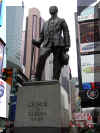





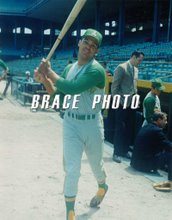


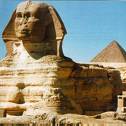
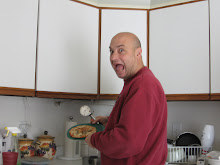
3 comments:
S- what about the movie version where the Babe did it for a sick kid in the hospital? I vaguely remember that.
Nice piece. When my kids were little I took them to Camden Yards. The O's were my lifeline to keep my boys into baseball during the long winter of no DC baseball.
- HJ.
I can't believe you resisted the temptation to purchase a Gus Triandos bobble-head ! :) I remember him as a Tiger(loved his name) but his Orioles days were before that. I'm sticking with the Babe calling that home-run because as you point out although he had 714 career homers, none were really notable. His biggest moment before the called shot was a negative; getting thrown out at home plate for the last out of the 1926 World Series. --- SKIP
Good stuff. I'm curious, where do you stand on the HR stats? I refuse to give anyone credit for having more with all the nonsense instituted to enhance the HR chase. To wit: shortened fences (especially in Atlanta toward the end of Aaron's career), tighter baseballs, etc. On the other hand, not counting African-Americans in the HR count (from the negro leagues) is even less cool (to me). If somebody in the negro leagues has more, they should have the title. I'm obviously against the fugazies (steroid Homers) ... they shouldn't have an asterisk, they should be in a separate building. Let's go Mets!
Post a Comment